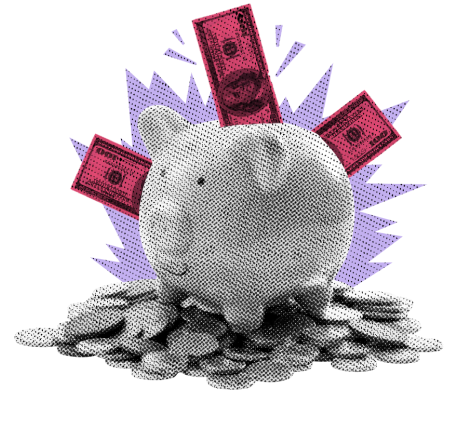Stocks bounced off ugly losses to close in the green in response to a Fed policy move, more so yet to Chairman Powell’s commentary. The market has created its own narrative, separate from the Fed’s.
Little hawk. Well, the big day came and went, and the end result was two thumbs up from the capital markets. What in the world happened yesterday? Even if you are an occasional reader or a daily quick-browser-while-commuting, you know that the market had baked in a +25 basis-point rate hike at yesterday's FOMC meeting for some time. Truth be told, these days, the Fed mostly does what the market is expecting. That may seem odd to you, but the markets are actually a pretty effective clearing mechanism, taking into account the economy, expectations, emotions, and real, hard, facts-based analysis. That said, though the markets would have liked the Fed to keep rates lower for longer, they collectively recognized the need to raise interest rates to tackle inflation and began to factor in rate hikes. It was painful and sometimes ugly, but ultimately, it was always orderly.
Here is how the cycle works. The Fed starts to talk about tighter policy. Markets respond by factoring in what they, collectively believe rate hikes should be. More aggressive Fed members then adjust those expectations through speeches… yes, more talk. Ultimately the Fed meets to discuss policy, and wouldn’t you know it the rate hikes are typically right where Fed Funds futures expect them to be. To be clear, there is a lot of adjusting along the way, but ultimately expectations are closely aligned with where the Fed wants them to be. You see, it is by design that this occurs. The Fed utilizes what it calls “guidance” as a policy tool. Guidance can come in the form of official Fed releases like forecasts, which include the infamous Dot Plot, or just plain speaking engagements. This ensures that investors are well-prepared to policy moves and they, in fact begin to make adjustments long before policy is enacted. Just look at how bond yields jumped well in advance of the Fed’s first rate hike last March. The market was actually doing the Fed’s bidding, tightening credit before any changes occurred. Ok, so now you know, but I am sure that you suspected as much.
So, what happened yesterday? Policy came in as expected, but there was a bit of disconnect on what happens next. You see, Powell clearly mentioned that the Fed was considering further rate hikes (plural), but the market is factoring only 1 more hike (singular). Further, futures have factored in rate cutting beginning in the summer and continuing through the end of the year. Futures peg Fed Funds ending the year 25 basis points lower than today’s target. This morning’s projections are in line with where they had been for weeks leading up to yesterday's meeting, so not much has changed. This, despite Powell’s overt signaling that rates would remain high and are not likely to come down in 2023. Where is the disconnect? Well, Powell is known for his careful and expert signaling, carefully selecting his words and tone… guidance. Though the policy statement made it clear that rates would continue to rise, and Powell echoed as much, he did manage to slip in some less-hawkish guidance, though it could hardly be classified as a pivot. Powell told us that the “disinflationary process has started,” which is great news, and those very words sparked yesterday’s rally. However, he did caution that the Fed would need “substantially more evidence to be confident that inflation is on a sustained, downward path.” Was that bad news for markets? Nope. The Fed is now assessing strategy on a meeting-by-meeting basis and significant improvements can impact policy, according to Powell. Well, we would hope that would be the case, but OK, I suppose that if inflation really starts to pull back, the Fed can significantly change its projections, and subsequent actions. Powell expects more disinflation to begin to show up in the housing market as higher rates take their toll and leases are renegotiated. Hmm, rates began rising last March, so yearly leases should be coming up soon. I am not sure that Mr. Powell knows how much NYC leases are but, I do, and I am sure hopeful that he is correct. The end result of yesterday's meeting was that the Fed raised rates as expected, the Fed is still concerned about inflation as expected, rates may go yet higher as expected, no dovish shift as expected (but maybe hoped for), and no doubling down on hawk-talk… not so-much expected. And that was good enough to cause stocks to rally. All eyes are now turned to Friday’s important monthly employment number, after yesterday's ADP figure came in lower than expected. The Fed will be watching that carefully… they said as much.
WHAT’S SHAKIN’
Meta Platforms Inc (META) shares are higher by +19.42% after beating Sales estimates by +1.63% with a big miss on EPS. The company’s CEO, Mark Zuckerberg, though it is still spending a lot, made a convincing case that it was on a path to becoming leaner and meaner. Potential average analyst target upside: +27.1%.
Merck & Co Inc (MRK) shares are lower by -3.51% in the premarket after it announced that it beat EPS and Sales estimates by +5.52% and +1.45%. Merck provided full year profit guidance, which was below analysts’ estimates, which is the cause of the selling. Dividend yield: 2.72%. Potential average analyst target upside: +9.9%.
Stanley Black & Decker Inc (SWK) shares are lower by -4.34% in the premarket after topping on EPS and Sales but missing on full year guidance. Dividend yield: 3.51%. Potential average analyst target upside: -4.8%. WHY IS THIS NEGATIVE? Because the company’s share price is higher than average analysts 12-month target price. This can be interpreted as the stock being overvalued, but it does not mean that the stock cannot rise from here.
FedEx Corp (FDX) shares are higher by +3.08% in the premarket after the company announced that it was laying off 10% of its top management jobs as a cost-savings measure. The company will announce earnings on 3/16. Dividend yield: 2.27%. Potential average analyst target upside: -1.3%. WHY IS THIS NEGATIVE? Because the company’s share price is higher than average analysts 12-month target price. This can be interpreted as the stock being overvalued, but it does not mean that the stock cannot rise from here.
ALSO, this morning: Cardinal Health (CAH), Becton Dickinson (BDX), Quest Diagnostics (DGX), Estee Lauder (EL), Hershey (HSY), and Bristol-Myers Squibb (BMY) all beat on EPS and Revenues, while Ball Corp (BALL) and Air Products (APD) came up short.
YESTERDAY’S MARKETS
Stocks rallied yesterday on an optimistic interpretation of the Fed policy. The S&P500 Index rose by +1.05%, the Dow Jones Industrial Average climbed by +0.02%, the Nasdaq Composite Index jumped by +1.00%, and the Russell 2000 Index advanced by +1.49%. Bonds gained and 10-year Treasury Note Yields fell by -19 basis points to 3.41%. Cryptos climbed by +2.47% and Bitcoin climbed by +3.19%.
NEXT UP
- Initial Jobless Claims (Jan 28) is expected to come in at 195k, slightly higher than last week’s 186k claims.
- Factory Order (Dec) may have gained +2.3% after falling by -1.8%.
- After the closing bell earnings: Apple, Alphabet, Amazon, Gilead, Starbucks, US Steel, QUALCOMM, Microchip Technology, and Clorox.
.png)

